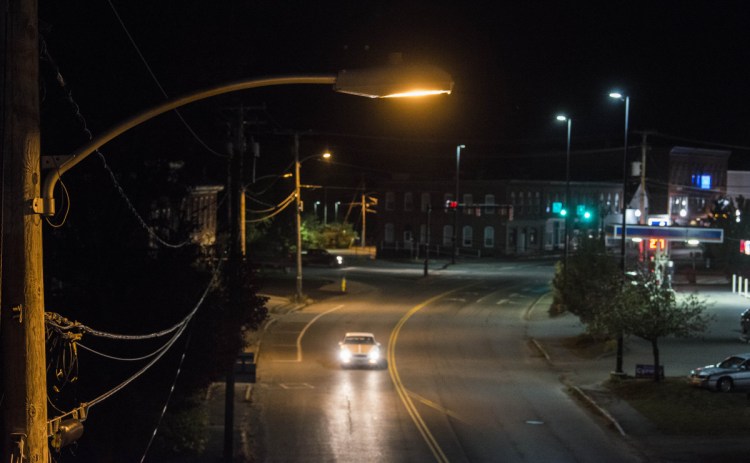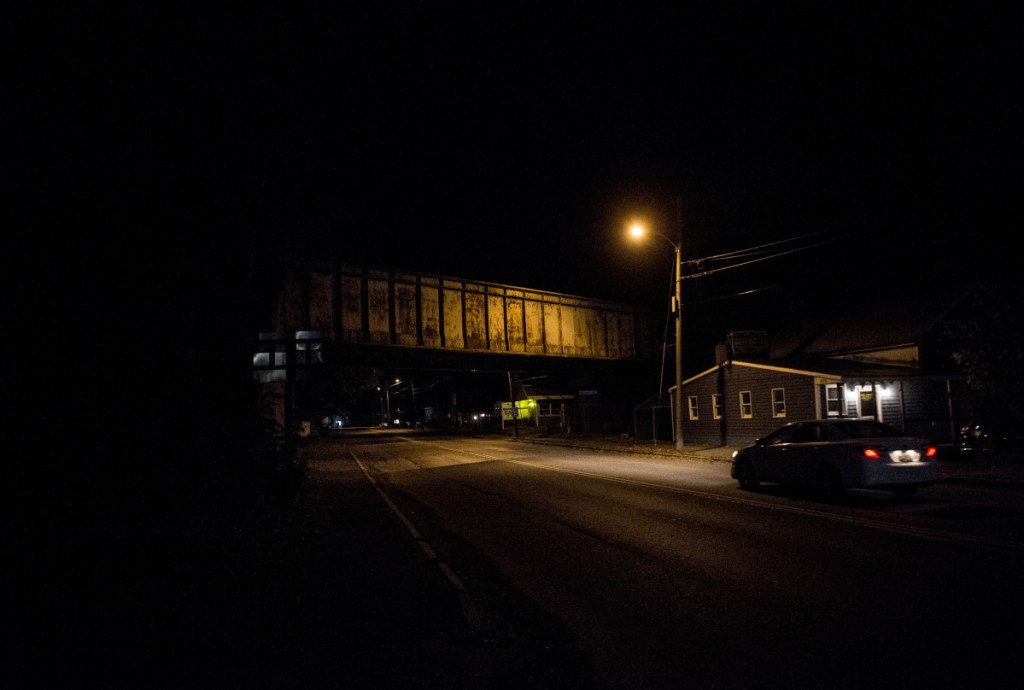FAIRFIELD — A town-initiated inventory of its streetlights helped illuminate a billing discrepancy, and Central Maine Power Co. will be reimbursing Fairfield several thousand dollars as a result.
“We were paying for streetlights that don’t exist,” Town Manager Michelle Flewelling told the Town Council on Oct. 10. “We did find out today that CMP will be reimbursing the municipality for the full six years allowable under their rules and regulations.”
Flewelling explained that 19 of the more than 300 streetlights in town owned by CMP, for which the town pays a monthly per-light fee, were still showing up on bills even though they were no longer lighting up the streets.
She later speculated those 19 lights could have been removed years ago because of storms, construction, car accidents or other reasons and that their removal was not documented by the town or CMP at the time.
As a result, CMP has agreed to refund nearly $14,200 to the Town of Fairfield for past billing related to 17 of the missing lights. School Administrative District 49 is also receiving nearly $3,100 because the two other missing streetlights were billed to the school district’s account.
CMP spokeswoman Gail Rice said she could not comment specifically on the Fairfield situation due to the company’s customer privacy policies and rules from the Maine Public Utilities Commission that prevent CMP from sharing customer-specific information. But Rice did provide general information on CMP’s streetlight billing process, and said the company is unaware of any other such situation where a town was billed for a group of streetlights that no longer exist.
“CMP does not perform routine inventories of the 50,000 street lights it owns and maintains for more than 200 Maine communities,” Rice said. “The company relies on municipalities to report street lights and poles that need to be repaired or replaced.”
Flewelling indicated in an interview that Fairfield had been in the dark on the missing lights until last winter, when the public works director conducted the inventory check because the town was considering purchasing its own streetlights. That inventory revealed the missing lights at “various locations,” according to Flewelling, who said the seemingly random distribution of the removed lights has left the town unable to determine any specific cause. One prevailing theory, she said, is that some were damaged in the Ice Storm of 1998.
Each of the missing lights have installation dates in the inventory list, with one dating as far back as 1979. Eleven of the lights were installed before the ice storm.
According to the inventory, seven of the lights were located on Main Street, two on Island Avenue, and two on West Street with individual lights missing on Hatch Street, Lawrence Avenue, Middle Road, Ohio Hill Road, Osborne Street and Pung Hill Road. The two lights billed to the school district were located on West Street.
After the town discovered the discrepancy, Flewelling said it was presented to CMP and the company did its own review, ultimately reaching the same conclusion that the lights were, in fact, missing. The question then became how far back CMP would reimburse the town and school district, given the uncertainty about how and when the lights were removed.
A CMP account manager notified Flewelling on Oct. 10 that company management had approved credits for past delivery and supply charges connected to the 19 missing lights.
“After further analysis of the 19 missing municipal street lights, we cannot find any information indicating when these lights were removed,” said the account manager in an email to Flewelling. “Per our Terms and Conditions, section 12.5, the company will refund to the customer excess charges for the previous six (6) months, or the actual period of error, not to exceed six (6) years, if the actual period can be determined.”
Rice explained that CMP owns the streetlights in most municipalities, and that the lights are not metered with the town instead paying a monthly rate per light.
Maine municipalities have increasingly explored owning their own streetlights and converting to light-emitting diode (LED) lighting fixtures.
An official at the Maine Public Utilities Commission, which regulates electric, natural gas, telecommunications and water utilities in the state, was unaware of any other municipalities that have experienced a situation like Fairfield’s with missing streetlights.
“If a pole is damaged or a street light needs to be fixed or replaced, we rely on the municipality to bring that to our attention,” Rice said. “Non-working streetlights can also be reported using a form on our website. Our crews also report issues as they are discovered in the field.”
Flewelling said working with CMP to correct the situation was not a contentious process.
“Any customer who feels a bill is incorrect can — and should — bring that to our attention,” Rice said. “We will investigate the matter thoroughly and if a credit is due, we will provide it in accordance with our terms and conditions.”
Matt Junker — 861-9253
Twitter: @mattjunker
Send questions/comments to the editors.




